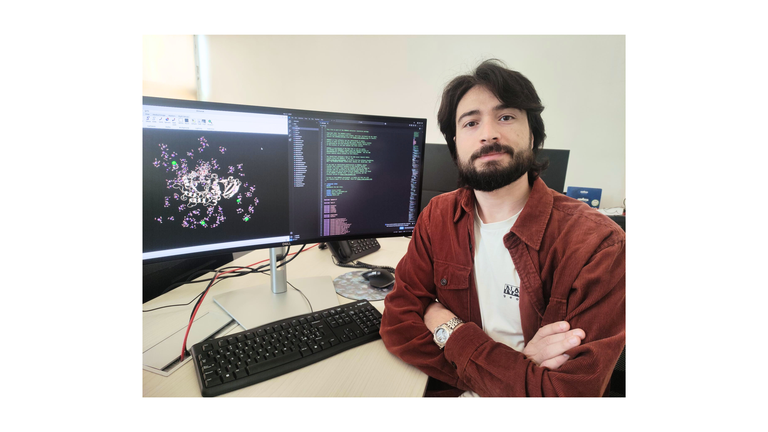AI, Biophysics & Rare Diseases: Andrea Pasquadibisceglie’s Mission at TIGEM

Originally from Italy, Andrea Pasquadibisceglie spent a significant portion of his academic and professional journey at the Royal Institute of Technology (KTH) in Stockholm. His international experience has played a pivotal role in shaping his expertise in Computational Structural Biology, ultimately leading him to his current position as a Staff Scientist at TIGEM.
Could you briefly introduce yourself?
Hi, I am Andrea Pasquadibisceglie, from Cisterna di Latina, a small town near Rome. I obtained my Bachelor's in Biological Sciences at Roma “La Sapienza” University. Then, I moved to Roma Tre University for my Master's degree and my PhD in Biomedical Sciences and Technologies, which I carried out under the supervision of Professor Fabio Polticelli. During this period, I used computational methods to model the structure and dynamics of membrane proteins involved in human diseases. After my PhD, I spent two years as a postdoctoral fellow in the laboratory of Professor Lucie Delemotte, in Stockholm, where I learned advanced molecular dynamics methods and how to combine them with machine learning and artificial intelligence.
Can you provide an overview of your current role?
My main expertise is in applying AI and physics-based methods, integrated with experimental data, to study the structure, dynamics, and function of proteins. My main project here at TIGEM focuses on the design of hyperactive enzymes. Gene therapy represents a great tool for the treatment of rare genetic diseases. However, reintroducing the wild-type protein may not be sufficient. Higher vector doses are often required, causing inflammation and toxicity. To solve this issue, we are designing new protein variants that will be more active than the wild-type isoform. Hopefully, the hyperactive variants will recover the healthy phenotype by reducing the overall vector dose and minimizing the risk of side effects.
What did you learn from your experience abroad that you now bring with you to Italy?
The two years I spent in Sweden allowed me to complement and improve the skills I acquired during my PhD in Italy. More importantly, the environment I was working in (SciLifeLab) allowed me to meet people from all over the world and from different backgrounds. This made me realize how important it is to collaborate with people that have different point of views on the same problem.
How can your experience and skills foster innovation and advance research within TIGEM?
I am eager to apply my expertise toward the final goal that TIGEM and Fondazione Telethon have: finding cures for rare diseases. In particular, I believe that physics-based methods and AI algorithms can not only accelerate our research but also help generate new hypotheses and rationalize experimental data that is difficult to interpret.
What are your professional goals now that you are back in Italy?
My current professional goal is to obtain an independent position as a group leader and recruit people with diverse expertise who can work synergistically to improve our understanding of the molecular mechanisms underlying rare diseases and molecular therapies.
Is there a dream or a goal you hope to achieve in the coming years in your role at TIGEM?
TIGEM gave me the opportunity to return to Italy and make a difference in people's lives. I will do my best to contribute to this great scientific environment and push forward the frontiers of scientific research on rare diseases.
